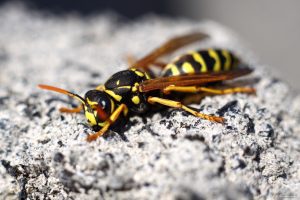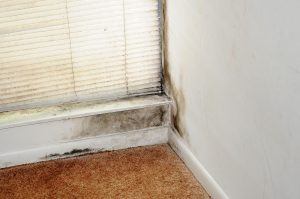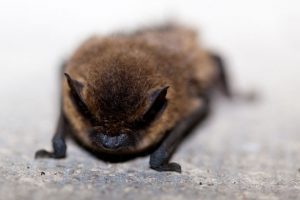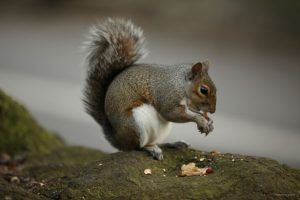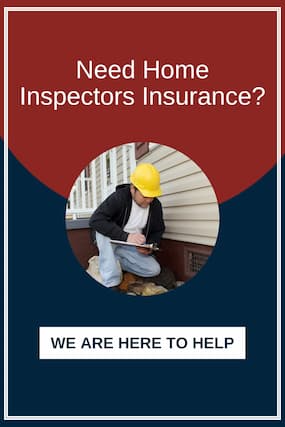While winter can pose some specific dangers to a home inspector, summer is the time of year with the most hidden dangers. Here are some of the biggest summer home inspection dangers and ways to avoid them or be prepared for them.
Summer Home Inspection Dangers And Safety Tips For Home Inspectors
Home inspectors rely on their sense of sight, sound, smell, and touch to do their jobs effectively. It’s important to use those skills along with a good dose of caution to stay tuned to any dangers that may be present. It’s best to always keep in mind that the job starts with inspecting the property for any potential dangers to you or the occupants before concentrating on the search for passive dangers that will affect the soundness of a home and its saleability.
The Heat: Safety Threat & How To Avoid It

One of the biggest threats to the safety and health of a home inspector during the summer is the heat. Whether you are outside, on a roof, in a crawlspace or especially in an attic, the threat of hyperthermia (elevated body temperature) is always present. With temperatures in some parts of the country regularly topping 100 degrees and attic temperatures far above that in many others, inspectors are particularly susceptible to heat.
Safety Tips To Avoid Overheating –
The first tip is to limit time in the heat to a few minutes. This may mean breaking up an attic, roof or exterior inspection into several smaller trips with intermittent breaks. It’s important to stay hydrated and plan attic and roof inspections based on the time of day to avoid the greatest heat concentration.
Apply plenty of SPF50 or better sunscreen on all exposed skin, and wear a hat when inspecting roofs and outdoor inspections. To guard against hot roofs, always wear gloves and knee pads as part of the inspection process.
Relegate attic inspections to the morning hours whenever possible. The idea is to think about when the attic will be cooler. Always open the hatch to the attic and wait a few minutes for the additional ventilation provided by airflow to begin permeating the space. Opening a window on the lower level may speed the process if the home is not air-conditioned in the adjacent living spaces below.
Certain safety problems are common to hot environments such as slipperiness due to sweaty palms, dizziness, and fogged safety glasses. All of these factors can affect your performance alertness, vigilance and coordination, which can adversely impact your safety. Surfaces can be hot as an oven both inside and outside during the summer so protective clothing can prevent burns from contact.
Stinging and Biting Insects and Reptiles: Safety Threat & How To Avoid Them
Bees, wasps, hornets, spiders, and other stinging and biting insects are always a concern in the summer months for inspectors. The presence of wildlife in a home’s basement, attic, or elsewhere is something that all inspection personnel should be prepared for. A seasoned inspector should know the signs of a possible infestation of the stinging variety in attics, crawlspaces, and exteriors of the home and surroundings.
Safety Tips To Avoid Stings and Bites –
In order to perform the best inspection possible, inspectors should know what signs to look for in the case of all varieties of common and not-so-common animals that can invade a home. Make an exterior visual pass looking for cracks and entrance points to the attic as well as any telltale signs of stinging insects. Be aware that bees and wasps are attracted to lights, especially flashlights carried by inspectors as they enter dark attics or crawl spaces.
As one of the most likely creatures to infiltrate a home, the presence of mice can be a sign of other possible wildlife infiltrations. Things like bird feeders, acorn trees, and other sources of food can be an invitation to a number of different creatures. So too can wood piles or other brush and debris piles, regardless of their proximity to the home.
If you even see one or two entering or hovering around an area, it’s best to take precautions with protective gear for a quick closer inspection without disturbing the area. If you get visual confirmation, inform the homeowner so that they can bring in a professional before you inspect the area further.
Airborne Pathogens: Safety Threat & How To Avoid Them
There are many health dangers during the summer that can be inhaled while doing an inspection. Just like pests, mold and fungus can grow rapidly in crawlspaces where they can become a health concern. Molds produce allergens that can be irritating or even toxic causing a wide variety of short-term and long-term reactions.
Safety Tips To Avoid Pathogens –
Every inspector should have and wear a NIOSH-rated N-95, double-strap mask when inspecting attics and some basements. Open dirt crawl spaces may require the use of a respirator as the soil (especially in older homes) can contain contaminants such as mold spores, decomposed animal carcasses, rodent feces and urine. Other dangers include insulation and even asbestos.
A good inspector knows the short list of potentially dangerous and even deadly snakes that can be found in their region of the country as well as the environments and conditions that they love. Once again, protective gear such as gloves, proper boots, and other protective clothing are essential to keeping safe from the unknown and unexpected threats of a summer home inspection.
Summer Home Inspection Checklist To Follow –
Inspect for Small Holes and Droppings –
When it comes to looking for openings made by small wildlife creatures, the size of the hole can provide clues to the type of creature. Mice need at least a 1/4-inch opening while squirrels require holes from 1.5-inches to three inches. Bats and birds fall in the middle as they need at least a 3/8-inch to one-inch circumference gap. Hole sizes do not definitively identify the species of animal, so droppings can be another clue as to what has infiltrated the home.
Bat droppings, which are usually black and brown speckles, will be concentrated below where they roost and crumble like dust when disturbed. Birds often leave the tell-tale white droppings where they enter while mice leave rice-seed type droppings scattered about. Squirrels on the other hand may or may not leave droppings.
It’s best to start an inspection for holes from the outside using a powerful flashlight since the hole will not reflect the light. Pay special attention to corners, gables, eaves and vents, and any place where two boards meet. These are the areas where moisture and heat can cause the boards to expand and contract until a gap forms that animals can exploit.
Inspect the Foundation Carefully –
Check if you have visible signs of a weak foundation such as cracks, warping ceilings, and sagging floors.
Since many animals like squirrels, mice, raccoons, and chipmunks can enter at ground or foundation level, you should inspect the foundation on your knees and look for gaps around pipes and dryer vents. Rotted sills and cracks in the foundation can also be infiltration points for smaller creatures like mice.
Many infiltration points will have telltale fur or rub marks where oil from the animal’s body discolors the area around the opening. Be sure to check downspouts and gutters as they can show the signs of where squirrels and raccoons have climbed. Raccoon prints will look like brown smears and scratches will be deep and pronounced. In addition, be sure that all hatchways and garage doors fully seal without any openings where animals can get in.
Look Out for Anomalies on the Roof and Chimney –
Check if there are any flaky shingles, moss infestation, or discolored or dark areas in your roof. The presence of such signs can indicate a rotting roof which needs to be changed.
When moving to the roof, begin by scanning the gutter and roof area as normal while keeping an eye out for anomalies that could be infiltration points for animals. Squirrels for instance, are known to sit on the gutter and chew through rain-softened fascia boards. The roof itself could have telltale signs of feces such as that of raccoons that often defecate before entering an attic or chimney. In order to avoid contact with feces, it’s best to wear protective gloves as many forms of animal feces carry potentially dangerous bacteria, microscopic creatures and roundworms.
Moving to the chimneys and starting from the top, check the flue (or flues) for proper regulation screens and make note of any rust or holes. Uncapped flues should be inspected for smudge marks and fur (which suggest raccoon presence) and spider webs (which suggest lack of activity). Take an extra moment to be quiet and listen for any noises emanating from the chimney such as scratching, fluttering, chirping, or grinding noises.
Check the Attic and Crawl Spaces –
After a thorough inspection of the exterior and roof of the house, it’s time to move to the inside with particular focus on the attic and crawl spaces. Once again, it is best to wear proper protection such as a HEPA filter dust mask, heavy gloves, knee pads and thicker clothing to protect yourself from touching or inhaling animal feces. This also protects you from common inspection dangers like dust and insulation fibers.
Using proper precautions to walk on the beams and using the trusses for greater stability when possible, inspect the vent screens for areas where they have been pulled away. Turn off the flashlight to inspect for any light that may be entering from holes while being sure to differentiate between them and ridge vent openings or soffit vents.
The insulation itself can hold clues to animal infiltration as holes in the insulation can be caused by animals. Trails in blown and loose fiberglass insulation can be the signs of animal trails that can range from slight to very pronounced, depending on the animal.
Feces can also be present on top of and under the insulation.
Watch Out for the Signs of Past Pest Infiltrations –
Lastly, look for signs of the homeowner adding things that are meant to block infiltration as this usually means that it has occurred in the past. This can include aluminum flashing at the eave level, hardware cloth over vents, mouse poison, wire screening around porches and decks, etc.
Today’s home inspectors have a long and growing list of things to look for when inspecting a house. Although these items regarding animal infiltration add to that list, those that desire to do the best possible job will incorporate them into their investigative techniques. For protection against errors and omissions, choose EliteMGA’s pest inspection insurance.

